
The Camino Real From Barichara To Guane
Standing there on the Camino Real just outside of Barichara watching the sunrise light up the canyon walls; I couldn’t help but wonder what this royal road used to look like during the days of the Spanish Conquest.
What sort of terrible and historical events must have occurred on this Camino Real, I thought to myself as my bus pulled into this town of whitewashed walls, red tiled roofs, and relaxed vibes.
The Town Of Barichara
Often referred to as the most beautiful town in Colombia; Barichara lies in the Santander Department and just forty-five minutes West of San Gil; Colombia’s adventure sports capital. It is a trendy spot for locals and travelers alike. On the weekends the town turns into a lively place when Colombians from the nearby cities of Bogota and Bucaramanga pour in.
What makes Barichara unique is its whitewashed buildings with red-tiled roofs, the cobblestone streets, and a laid-back atmosphere. Most home and business owners follow this design trend to keep the tourism dollars flowing in. The white walls, bright contrasting doors, and windows accompanied by flower displays make Barichara live up to its name as Colombia’s most beautiful town.
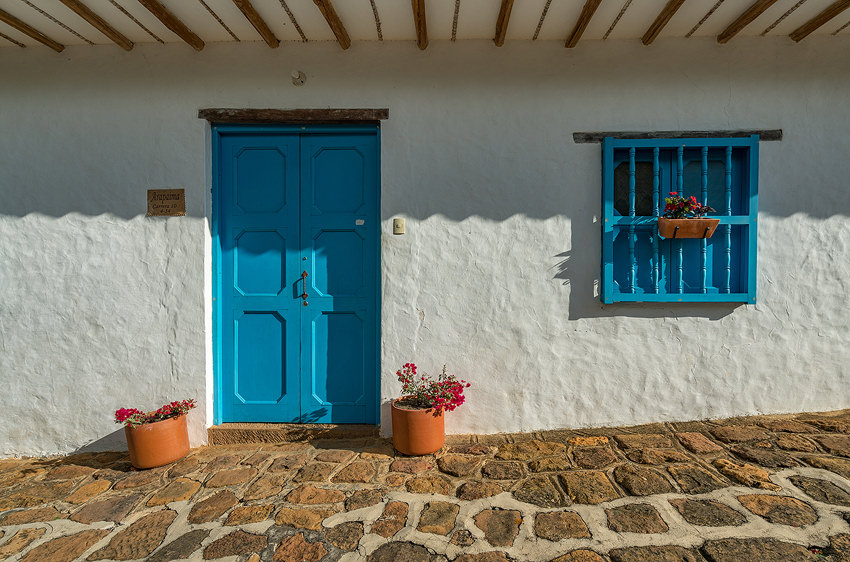
The Most Beautiful Town In Colombia

The Streets Of Barichara
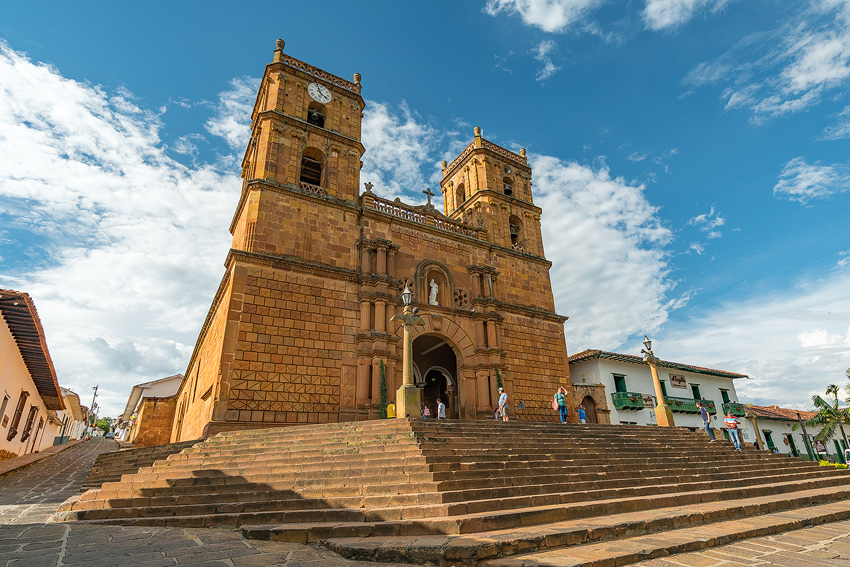
Catedral De La Inmaculada Concepción

From Inside The Cathedral
I don’t go to towns or churches just for the hell of it. There has to be an adventure looming nearby that justifies them as a base of operations.
Barichara’s whitewashed walls weren’t my reason for being there; I was there to hike an old Spanish trail called the Camino Real through the high plateau to the nearby pueblo of Guane.
The Camino Real
Originally used by the Guane (the indigenous in the area) and later reclaimed by the Spanish; the Camino Real (Royal Road) is roughly a two-hour hike from the town of Barichara to the nearby pueblo of Guane. The stone path laid by the Spaniards is still mostly intact, as well as a small stone wall stretching most of the length of the trail. Two stone pillars mark the beginning of the trail just past the Mirador on Carrera eleven.
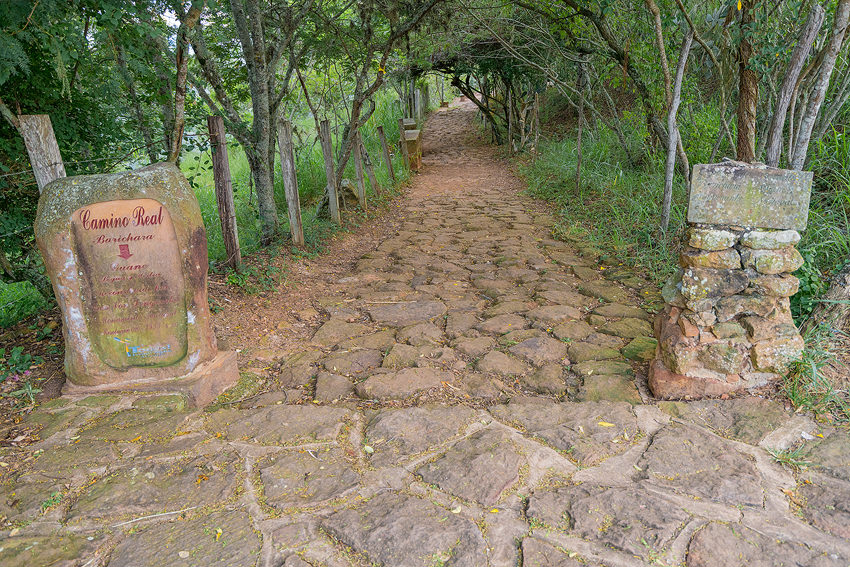
The Camino Real Trailhead

Sunrise Over The Valley
A short mossy wall will be your guide down the trail acting like a set of bumper rails in the sport of bowling; keeping you on track.
Travel Tip: This trail is fairly easy to navigate but if you want some extra assurance; download an offline map app.

The Old Spanish Wall

Look Betsy, It’s A Tourist
Thickly overgrown countryside turns into full open pastures and then back again as you make your way down the trail. Highway sixty-four cuts through a few times, but it is relatively easy to find where the trail picks back up again,
Some parts of the trail will leave you confused though. You will wonder if you’ve been suddenly transported to somewhere in the European countryside.

Wait A Minute; Where Am I?

Entrance To The Mirador
Mirador De La Piedra
Translated to the stone viewpoint; Mirador de la Piedra is a small rock outcrop at the top of a ridge overlooking the valley. The front gate leads to a little farmhouse run by a kind elderly couple.
Beware: They have a few very unfriendly dogs lying in wait for any traveler that ventures on to their land. Just keep your distance and wait for the owners to come out and get them under control.
To get to the viewpoint, you have to walk through the couple’s kitchen which is a little strange, but once you’ve gotten that over with you will see the white cross at the top of the hill. From there you can enjoy the view for as long as you like.

Mirador De La Piedra
On your way out it might not be a bad idea to buy a drink or some souvenirs from the owners. They don’t make much from their land and rely on the money from us wealthy travelers to keep them afloat.
The trail leaving Mirador de la Piedra is when things start to get interesting. White painted crosses, and Roman numerals adorn large rocks along the trail marking your path until the end of the Camino Real.
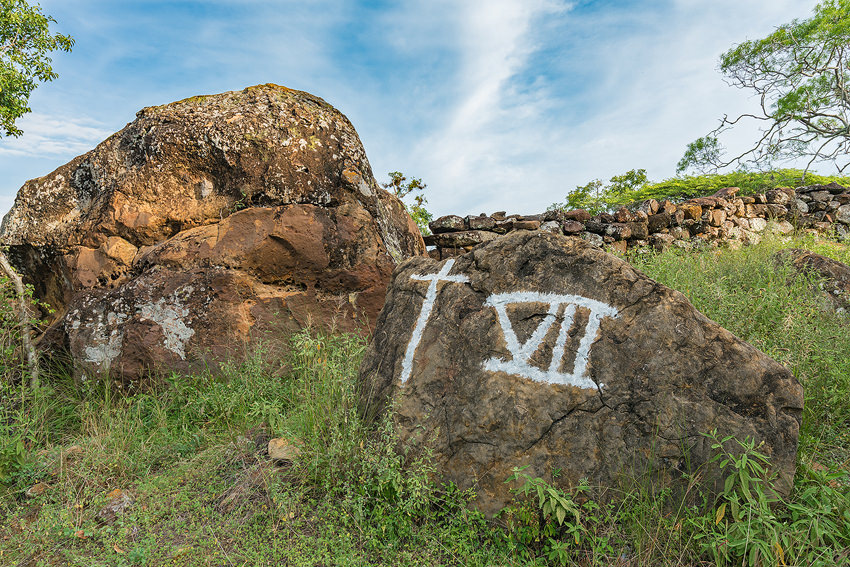
The Trail Markers

A Picturesque View

The Sign At The End Of The Line

The Streets Of Guane
The Town Of Guane
Baricharas neighboring town of Guane is very similar to its big brother. The locals have tried to replicate the success of Barichara by painting all of their homes and business white. They, however, are only a small community of locals whom mostly commute to Barichara for work and leisure.
This leaves Guane a beautifully undiscovered Pueblo off of most tourists radar. Like most towns in Latin America, the church is the crowning glory. The one in Guatape; Iglesia de Santa Lucia de Guane (church of Santa Lucia) reminded me of a Spanish church from the wild west days in the United States.
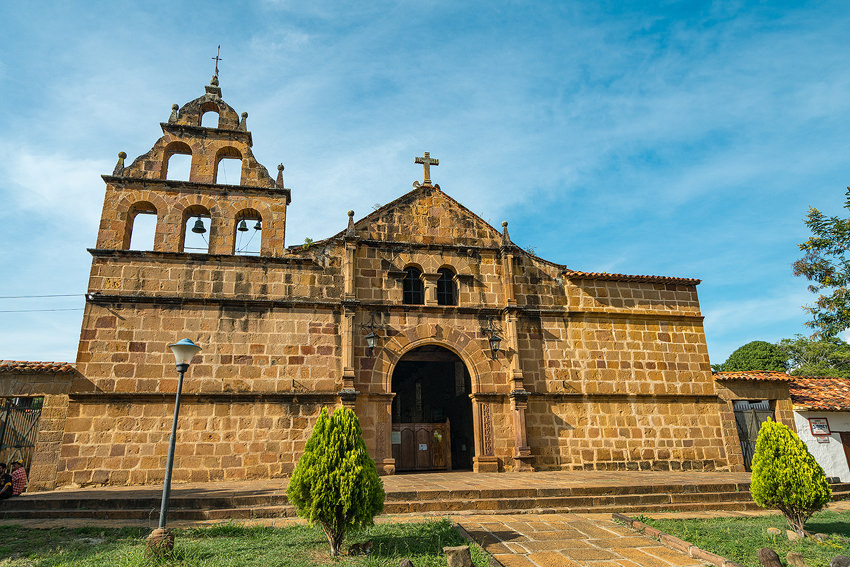
Iglesia De Santa Lucia De Guane
Another great part about getting up early to hike the Camino Real is that you will arrive in Guane just as the town is waking up. I think it’s cool to see people in different parts of the world doing their morning routines. If that makes me a creeper then so be it.
When And Where?
The biggest advice that I could give is, don’t go on the weekend. If you’re hiking the Camino Real and want to be one of the only ones on the trail, then go early in the morning during the week. There won’t be nearly as many people because most travelers take a day trip to Guane and the buses arrive around nine, which is right when you’d be getting back to Barichara after your hike.
You can get to Barichara from the San Gil main bus terminal. The buses leave every hour, and it should cost 4,700 COP or $1.60 USD. The buses between Barichara and Guane run every thirty minutes from the southeast corner of the main square and should cost 2,000 COP or $.75 USD.
Thanks For Reading!
Been to any cool hikes in the Colombian countryside?
If so, I want to know all about it.

